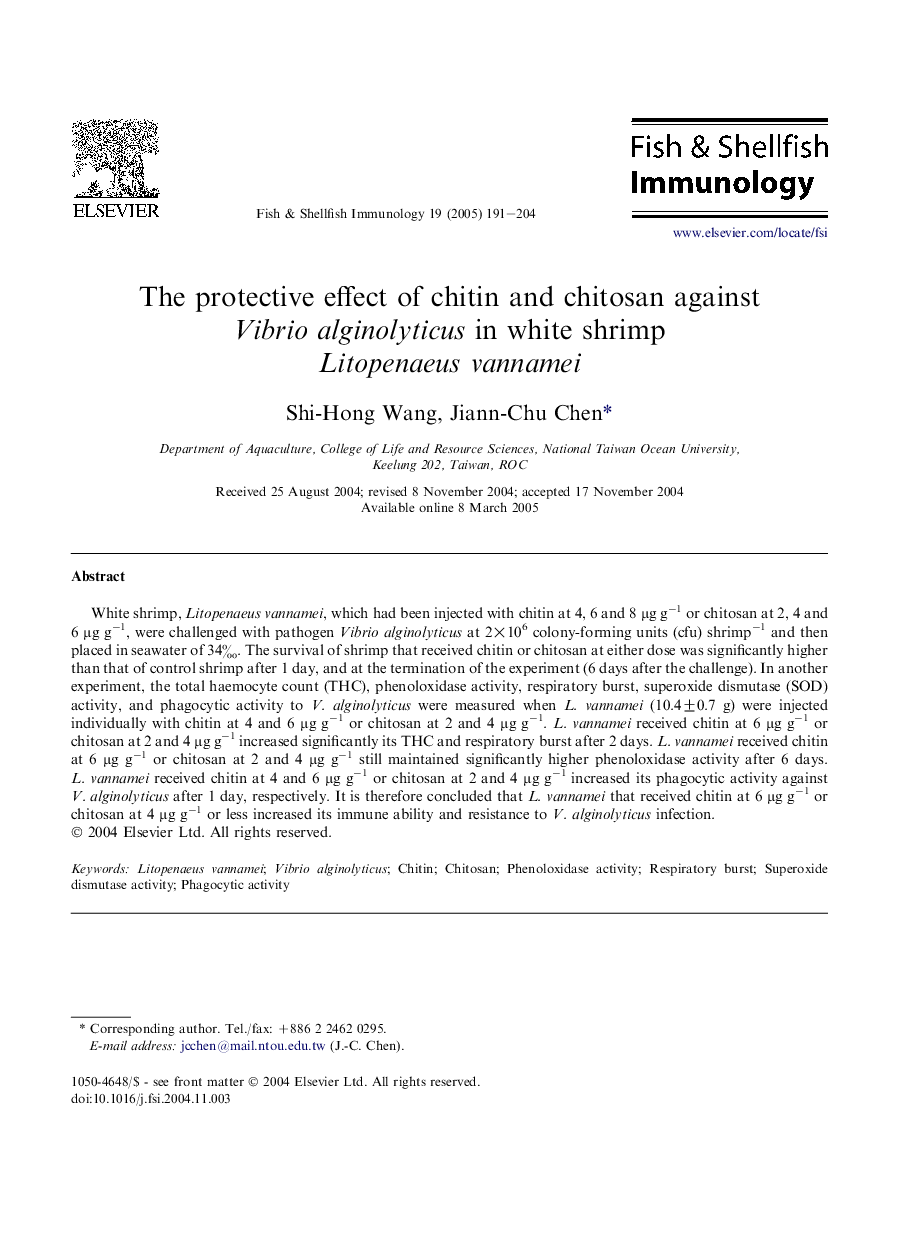| Article ID | Journal | Published Year | Pages | File Type |
|---|---|---|---|---|
| 8978796 | Fish & Shellfish Immunology | 2005 | 14 Pages |
Abstract
White shrimp, Litopenaeus vannamei, which had been injected with chitin at 4, 6 and 8 μg gâ1 or chitosan at 2, 4 and 6 μg gâ1, were challenged with pathogen Vibrio alginolyticus at 2Ã106 colony-forming units (cfu) shrimpâ1 and then placed in seawater of 34â°. The survival of shrimp that received chitin or chitosan at either dose was significantly higher than that of control shrimp after 1 day, and at the termination of the experiment (6 days after the challenge). In another experiment, the total haemocyte count (THC), phenoloxidase activity, respiratory burst, superoxide dismutase (SOD) activity, and phagocytic activity to V. alginolyticus were measured when L. vannamei (10.4±0.7 g) were injected individually with chitin at 4 and 6 μg gâ1 or chitosan at 2 and 4 μg gâ1. L. vannamei received chitin at 6 μg gâ1 or chitosan at 2 and 4 μg gâ1 increased significantly its THC and respiratory burst after 2 days. L. vannamei received chitin at 6 μg gâ1 or chitosan at 2 and 4 μg gâ1 still maintained significantly higher phenoloxidase activity after 6 days. L. vannamei received chitin at 4 and 6 μg gâ1 or chitosan at 2 and 4 μg gâ1 increased its phagocytic activity against V. alginolyticus after 1 day, respectively. It is therefore concluded that L. vannamei that received chitin at 6 μg gâ1 or chitosan at 4 μg gâ1 or less increased its immune ability and resistance to V. alginolyticus infection.
Keywords
Related Topics
Life Sciences
Agricultural and Biological Sciences
Aquatic Science
Authors
Shi-Hong Wang, Jiann-Chu Chen,
